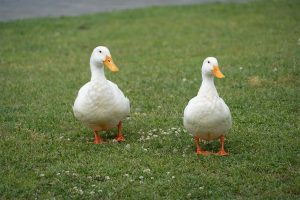
37 interesting facts about warblers
- 👁️ 1165
Warblers are a diverse and colorful group of small birds known for their vibrant plumage and melodious songs, making them a favorite among birdwatchers and ornithologists. They belong to the family Sylviidae and are primarily found in North America, Europe, and Asia. These birds are especially noted for their migratory patterns, traveling long distances each year. Warblers play a crucial role in ecosystems as insectivores, helping control pest populations. Their behavior and adaptation to various habitats make them an interesting subject for scientific study and conservation efforts.
- Warblers are known for their small size, generally ranging from 10 to 15 centimeters in length.
- They are predominantly insectivorous, feeding on a diet rich in insects and spiders.
- Many warbler species exhibit vibrant and varied color patterns, often with striking combinations of yellows, greens, and grays.
- Warblers are excellent at camouflage, with their plumage often blending into the leafy environments they inhabit.
- They are migratory birds, with many species traveling from North America to Central and South America during the winter.
- Warblers can be found in a variety of habitats, including woodlands, marshes, and even mountainous areas.
- The songs of warblers are complex and each species has its own distinctive calls and tunes.
- Male warblers are typically more brightly colored than females, a trait common in many bird species.
- Females are primarily responsible for building nests and incubating eggs.
- Warblers lay between 3 to 6 eggs per breeding season, which are often speckled and blend well with their environment.
- They have a high metabolic rate, which requires them to eat frequently.
- Some warbler species, like the Arctic Warbler, migrate over 10,000 kilometers annually.
- Warblers are often preyed upon by larger birds, and they rely on their agility and speed to escape.
- The average lifespan of a warbler in the wild is around 5 to 9 years, though this can vary by species.
- Warblers participate in a behavior known as “anting,” where they use ants to rid their feathers of parasites.
- They are very territorial during the breeding season, often engaging in fierce competitions over nesting sites.
- The Kirtland’s Warbler, a species from North America, depends almost exclusively on young jack pine forests for breeding.
- Conservation efforts for warblers often focus on preserving their habitats and migratory routes.
- Some warbler species have hybridized in the wild, which can complicate species classification.
- Their rapid movements and tendency to stay deep within foliage make warblers challenging to spot.
- Climate change affects the migratory patterns of some warbler species, altering their traditional routes and timings.
- The Blackpoll Warbler’s migration includes a non-stop flight over the Atlantic from North America to South America.
- Warblers are very vocal during migration, which is thought to help keep flocks together.
- They have well-developed visual and auditory systems that aid in foraging and avoiding predators.
- Insect declines due to pesticide use and habitat loss pose significant threats to warbler populations.
- The Prothonotary Warbler nests in cavities near or over water, unlike most other warbler species.
- Many warbler species are indicators of environmental health, making their study important for ecological research.
- They often participate in mixed-species feeding flocks, especially during migration.
- The oldest recorded warbler was a Blackpoll Warbler that lived to be almost 7 years old.
- During the breeding season, male warblers often perform elaborate displays to attract mates.
- Warblers have been known to engage in “mobbing” behavior, where they collectively attack predators to defend their nests.
- Banding studies are crucial for tracking warbler migration and understanding longevity.
- Habitat fragmentation is a critical threat to warbler species, impacting their breeding and feeding grounds.
- Warblers are popular among birdwatchers and are featured prominently in birding guides.
- The diet of some warblers shifts to include berries and fruit during autumn migration.
- They are one of the most studied bird groups due to their abundance and accessibility.
- Warblers contribute to controlling mosquito populations, which can help reduce the spread of mosquito-borne diseases.
In conclusion, warblers are fascinating birds with complex behaviors and adaptations that make them a vibrant part of avian biodiversity. Their role in ecosystems as insectivores, coupled with their melodious songs and striking colors, makes them of great interest both scientifically and recreationally. Understanding and protecting these birds is crucial for maintaining biodiversity and the health of habitats they occupy, reflecting the importance of conservation efforts directed at their preservation.











